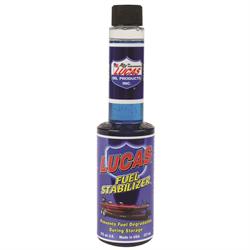How to Winterize Your Car
Every year after all the long weekend car shows, early morning cars and coffee, and late night cruise inns comes a time for some of us to put our hot rods away for the winter.
Here are a few helpful tips to make sure your hot rod is ready to go as soon as that new spring season comes back around.
1. Wash and Wax
By giving your car a good last detail it is not only therapeutic but also helps protect the finish on your car. Washing and putting a good quality coat of wax on your car will ensure there is nothing on your paint finish that will harm you vehicles perfect shine.
2. Check Fluids
Depending on how much you drive the vehicle or not the fluids in your car sitting inactive for an extended period of time may cause harm to certain vital components.
I typically suggest changing the oil regardless of the miles driven, simply due to the fact that oil does degrade over time whether it is used or not.
A coolant flush can prevent break down of aluminum components internally and also give you peace of mind ensuring that you have a correct mixture of antifreeze and water. This will prevent your coolant system from freezing over during some of those harsh winter nights.
3. Lubricants
Along with refreshing all of the greasable joints, mostly in the suspension, it is also a good idea to remove all of the spark plugs and apply a generous amount of fogging oil to protect the cylinder walls.
4. Fuel
Fuel mixed with oxygen begins the breakdown process in just over 30 days turning fuel to varnish. It is recommended filling your tank with premium fuel and a stabilizing agent just before parking the vehicle. This will help prevent any further damage to the fuel tank and lines.
5. Interior
Vacuuming out the interior and placing dryer sheets inside the car will help prevent a musty smell when the car is removed from storage. This may also keep small critters from turning your street rod into a Christmas dinner. Filling several tube socks with cat litter and placing them in the vehicle will also help absorb any moisture that is present.
6. Start the Vehicle
Starting the vehicle is often recommended, however, I would avoid this unless you plan on running the vehicle long enough to get the vehicle up to operating temperature for no less than 10 minutes. Starting the vehicle and running it for a short period of time creates unneeded moisture inside the engine and exhaust components allowing corrosion from the inside out.
7. Seal the Vehicle
One thing that may often get overlooked is the exhaust and the carburetor. As the car sits in storage, if left open, it provides a perfect hiding place for smaller animals to nest. It also allows moisture into the motor which can cause damage to components that have been sitting.
8. Create a Barrier
Parking your vehicle on a poured concrete slab, although better than a gravel or dirt floor, can still have adverse effects on any bare metal components that are on your undercarriage. Fuel and brake lines and suspension components can rust due to moisture coming through the concrete. By placing a couple sheets of cardboard under your car this will not only keep a barrier between the vehicle and concrete from moisture, but also protect your concrete from any fluids that may unfortunately come from the vehicle.
9. Jack Stands
If you do plan on having your car sit for 4-6 months or more I also recommend placing jack stands under the vehicle. Getting the tires off of the ground will prevent flat spots wearing in the tires and also preventing cracks in the tires if they do happen to go flat.
10. Car Cover
To finalize your storage we recommend a good quality car cover with a fleece or microfiber inner lining to protect your cars finish.
By doing these small preventive steps before putting your car away will make it that much easier to hit the streets once spring comes back around helping you scratch that itch you’ve had all winter.

